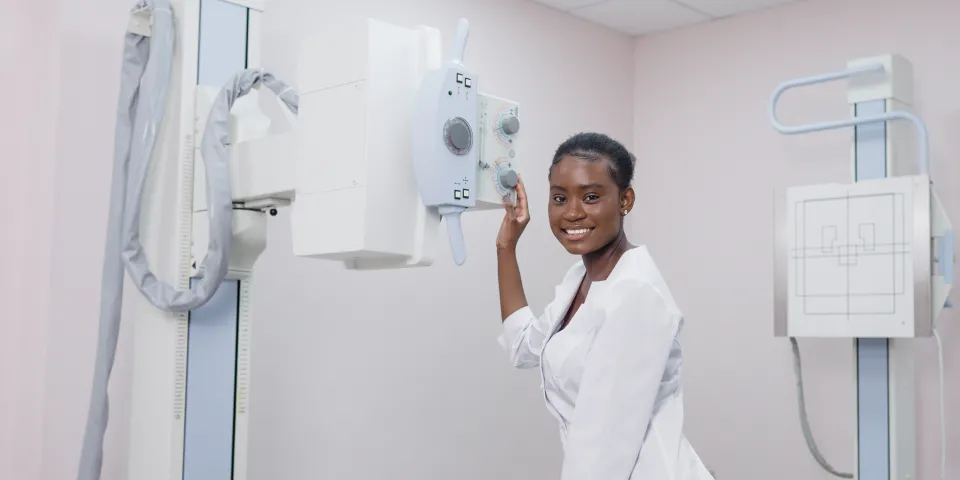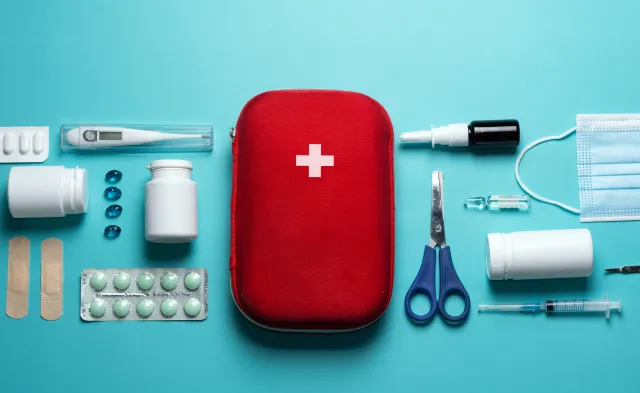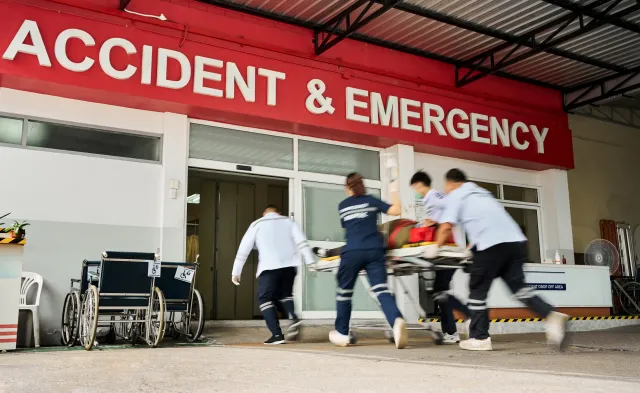Latest
It’s Your First Day of X-Ray Clinicals: Here’s How to Succeed
Apr 7, 2023

Earning your degree as a Registered Technologist (R.T.) in Radiology is no easy task. By achieving it, you will set yourself up for a long and successful career as a healthcare professional, performing life-changing assessments through advanced medical technology. After you’ve navigated your initial assignment and exams to lay the groundwork, it’s finally time for one of the most exciting and informative chapters of your education: clinicals!
Clinicals allow radiologic technology students to observe, understand, practice and become competent in an environment that prepares them for real-life experiences as Registered Technologists.
As exciting as preparing for clinicals can be, a new experience like this can be understandably intimidating. But don’t fret. Ensure you’re prepared to throw on your lead apron and fire up the X-ray machine by getting a better understanding of what to expect from your first day of X-ray clinicals.
What to Expect on Your First Day
- Introductions: Like all the other “first days” that you’ve conquered before, your first day of x-ray clinicals will begin with introductions to your peers, faculty, technologist, clinical staff and equipment. You’ll meet with your team who will show you around the X-ray facility and give you an overview of your facility's specific policies and procedures. This is also when you’ll get up close and personal with the digital imaging systems you’ll be using.
- Shadow Opportunities: Usually during your initial visit, you will be assigned to a specific department within the facility to simultaneously observe and assist the experienced R.T.s with procedures, positioning, techniques and general protocols. Supporting professionals with their day-to-day tasks will give you the confidence to flourish once you enter the field. You'll also observe how to best interact with patients through a variety of often difficult situations, picking up insightful tips for providing well-rounded, high-quality care.
- Training: The goal of clinicals is to ensure that you are as prepared as possible to serve your community and succeed in your career. Shadowing is a valuable resource, providing valuable experiences for future Radiologic Technologists. However, the most effective educational experience comes when shadow opportunities are supplemented by training. On your first day and throughout your entire clinical experience, you’ll be trained in proper safety protocols, record keeping, patient-facing procedures and exam prep. To get the most out of your experience, take your training seriously, and treat your practice procedures with the same seriousness that one would treat a real patient procedure.
Tips for Success
To start your clinicals off right, you should prepare yourself for the first day. Use these tips to help you set yourself up for success:
- Make Connections: Make positive first impressions by introducing yourself to your peers and instructors, including shaking their hands and being respectful. Creating connections will ensure that you’re getting the most out of this valuable experience and could lead to exciting opportunities down the road.
- Manage Your Time Efficiently: Being able to effectively manage your time will be a major key to success in clinicals. Your coursework is already time-consuming; by managing your time, you can make the seemingly impossible transition of adding clinicals to your schedule possible. Become a skilled time manager by focusing on prioritization, utilizing time management tools, and minimizing distractions.
- Be Confident. Be Curious: Throughout this entire journey, remind yourself that you deserve to be here. You are capable of not only completing these clinicals but crushing them! There is strength in asking for help or wanting to learn more about something you’re admittedly unfamiliar with—don’t be afraid to be inquisitive. Be curious about what’s going on around you and be open to collaborating with others. Carrying yourself with confidence will help make you the best radiologic technologist you can be.
With all this in mind, you’re more than prepared to thrive during your first day of clinicals and beyond. The skills you’ll acquire during this transformative time will support you throughout your entire career, so be sure to make it count. If you are not enrolled in a Radiologic Technologist program and are interested in joining this rewarding career path, learn more about Herzing University’s selection of available programs today.
Learn More About Our Radiologic Technology Program
BLS pay estimates calculate the median annual wage for various occupations. Per the BLS the median wage for an occupation is: "The wage at which half of the workers in the occupation earned more than that amount, and half earned less. Median wage data are from the BLS Occupational Employment and Wage Statistics survey." Bureau of Labor Statistics (BLS), U.S. Department of Labor, Occupational Outlook Handbook 2024. BLS median wage estimates do not represent entry-level wages and/or salaries. Multiple factors, including prior experience, age, geographic market in which you want to work, and degree level and field, will affect career outcomes, including starting salary and earnings as an experienced employee. Herzing neither represents that its graduates will earn the median salaries calculated by BLS for a particular job nor guarantees that graduation from its program will result in a job, promotion, particular wage or salary, or other career growth.
Latest
Recent Blog Posts
Subscribe to our Newsletter
Get the latest news you need to know, from study hacks to interview tips to career advancement. Have it delivered right to your inbox biweekly.








